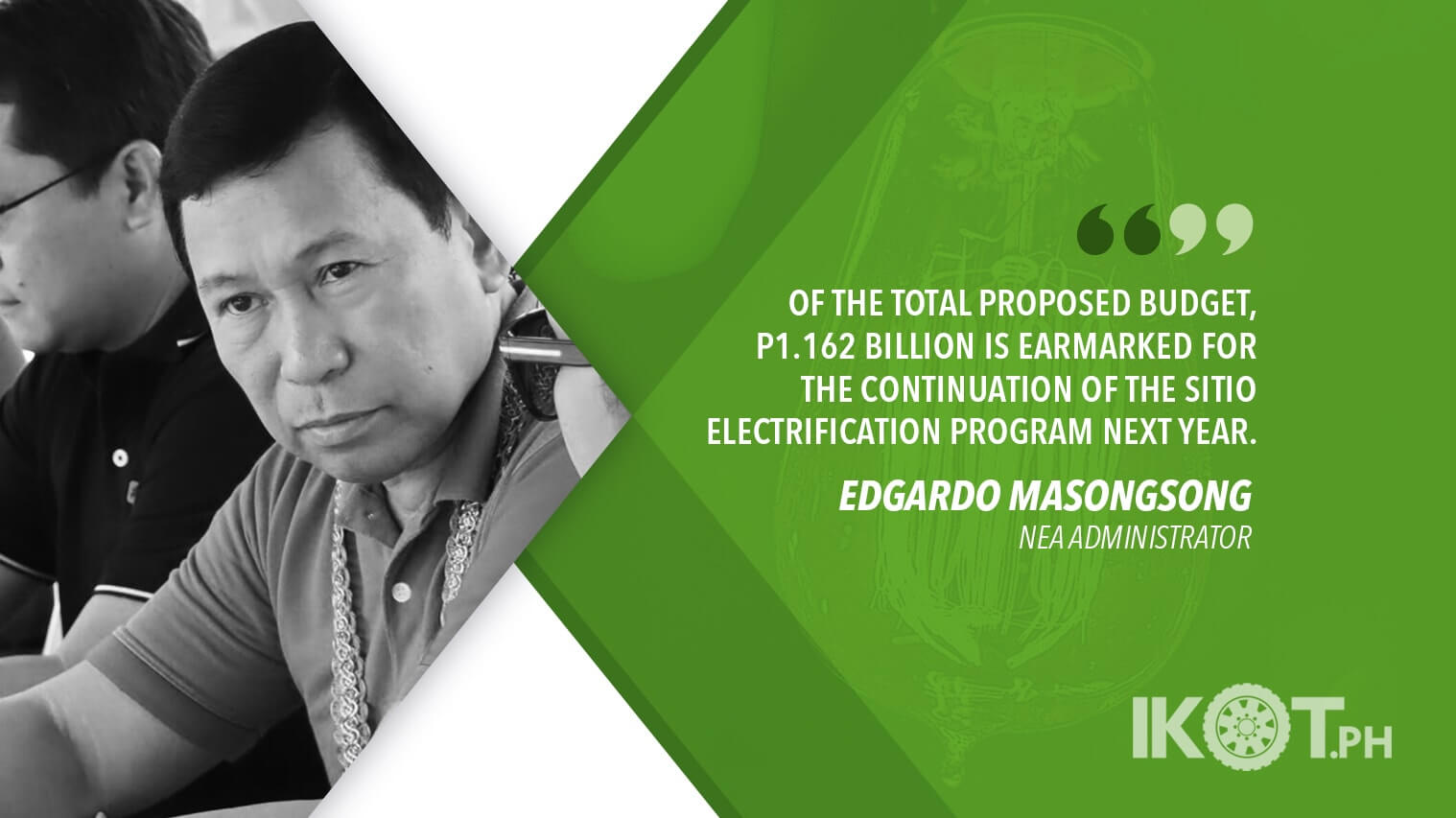Electric cooperatives (ECs) with low electrification rates will be given higher priority in the sitio electrification fund of the National Electrification Administration (NEA) for 2020, Administrator Edgardo Masongsong said.
Masongsong announced this when he presented NEA’s corporate operating budget (COB) for fiscal year 2020 based on the National Expenditure Program (NEP) before the Senate Committee on Finance on Thursday, October 10.
ECs with electrification levels of 74 percent and below will be given the bulk of the subsidy allocation
Masongsong said that of the total proposed budget, P1.162 billion is earmarked for the continuation of the Sitio Electrification Program (SEP) next year. The amount, he said, will only cover 775 sitios across the country that still have no access to electricity.
To determine which EC should be prioritized in the sitio electrification fund, the NEA has established a set of criteria. Masongsong said ECs with electrification levels of 74 percent and below, and with good project liquidation performance will be given the bulk of the subsidy allocation for next year.
The NEA chief said other criteria factored in are power coops with problems on peace and order, financial liquidity, and those classified as “medium” and below.
“Electric cooperatives with energization level ranging 95 percent and above, based on the 2015 census without growth rate, shall be the least priority for allocation,” the administrator said during the Senate budget hearing.
These ECs, Masongsong said, will be required to scout potential private investor for a joint venture, and international and local grants and programs, utilize their internally generated funds, and/or include in capital expenditure (CapEx) project application to the Energy Regulatory Commission.
“All other electric cooperatives which do not fall on the two categories shall be allotted with funding according to the degree of impact to the level of energization and least cost,” the NEA chief said.
Masongsong also noted that of the P34.375 billion worth of government subsidies released to ECs from 2011 to 2019, a total of P31.55 billion were already liquidated and only P2.825 billion remain unliquidated.
Savings as a result of refunds by ECs are being reallocated to other ECs with low energization levels.
Of the remaining unliquidated subsidy releases, the NEA chief said the below one-year unliquidated amount is P2.244 billion, the one-year unliquidated amount is P237 million, and the above one-year unliquidated amount is P344 million.
“The P2.2 billion are ongoing projects. Savings as a result of refunds by ECs are being reallocated to other ECs with low energization level. This is one of our strategies,” he said.
Masongsong, during the budget hearing, also committed to submit the masterplan detailing NEA’s strategies to help the national government realize the 100 percent electrification target by 2022.
In addition, the NEA chief assured that the agency, in partnership with 121 ECs, will continue to explore and exhaust other means, as well as maximize national government subsidies for sitio electrification and barangay line enhancement programs, and grants and donations both from foreign and local institutions.
Under the 2020 NEP, a P14.147-billion corporate operating budget is allocated for NEA. Of the amount, P1.746 billion will be financed by the NEA’s internally generated funds, P1.531 billion as subsidy from the national government (NG), and the remaining P10.869 billion representing non-cash subsidy for the conversion of NG advances.
The proposed budget will allow NEA to meet its other targets for 2020, which include electrification of 38 local government unit/non-government organizations (LGU/NGOs) resettlement sites, and provision for the cost counterpart of the Government of the Philippines on Japan International Cooperation Agency (JICA) donation for ECs in the Bangsamoro Autonomous Region in Muslim Mindanao.
The NEA’s other operational targets are the following: connection of additional 460,000 consumers, reduction of system loss to 11 percent, collection efficiency of 96 percent, release of P245 million loans to the ECs to finance CapEx projects and working capital requirements, and continued realization of a net margin from the agency’s financial operation.

